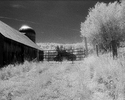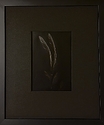It's easy to make a wash aid from dry chemicals. The basic recipe is:
Sodium Sulfite 20 g
Sodium bisulfite 0.2 g
Water to make 1 liter
However, the proportions are not that critical. I use a spoon recipe:
Sodium Sulfite 1 Tablespoon
Sodium bisulfite a generous pinch
Water to make 1 liter
As for hardening fixer: unless you have specific reason, you'll find both toning and washing more efficient with a non-hardening fixer. I used to mix my own F-6 back in the day, but switched to a rapid fix long ago (I use Ilford Rapid Fixer or Hypam without hardener now). Fixing is faster and more efficient too; no more waiting around for 10 minutes... You say you need the hardener for the belt dryer. If so Hypam or Kodak Rapid Fix plus hardener will speed things up for you. My question, however, is: do you really need a hardening fix to use the dryer?
Best,
Doremus
I always used stinky F5 when I was a kid, about 20 years back, I started using Kodak Rapid Fix with hardener, 1 minute, film dilution, no problems with the dryer. I then adopted the no hardener Ilford rapid fix. I had prints starting to barely stick to the belt. It got really dramatic when I started using the Ilford Art 300 gsqm paper, it went right around stuck to the belt. The real stupid thing I tried was to dry the FABULOUS FOMA chloride contact paper, (Man that is beautiful stuff!!!) Holy cow. First brilliant move was I tried to ferrotype it




. Took me about an hour to peel the paper, then soak the emulsion off the drum.
So I go back to my vast collection of OLD Kodak literature. Several times, I see little bits of reference to, "use a hardening fixer if prints tend to stick to dryer belts". This little bit of information no longer appears, in any modern literature, after the mid 70's, when the archival East Street Gallery folks, just down the road from me in Grinnell Iowa, scared the hell out of everyone, which started the archival washer craze, and dryer screens fury. I've managed to acquire, 3 giant plexiglass washers, 20x24, 11x14, and 8x10




.
I called Pakon last year, I had decided that I wasn't going to try to wash my drier belt again, it was wearing thin. BY what I think is a miracle, I got a hold of a super nice lady, in short, Pakon made me 3 new perfect belts for my 1966 Pakomax drier!!!
I think that I'm about done with my F6 phase, HOWEVER, the hardener does allow the prints to just fall off the belt, if I'm not watching, onto the floor

I have never had a problem with the hardener interfering with toning. I will probably go back to my develop, stop, 1 min Kodak Rapid fixer 1+4, wash briefly , into FRESH HCA 3min, Then Se toner 3 to 4 minutes (I always used 1+9, the 1+3 thing started about 10 years back because it's fast). Then I go 5 minutes into FRESH HCA, brief wash 2 minutes in tray, then 20 minutes in an archival washer. Then dry on my clean new belt.
I'm in total agreement that it makes no sense to use HCA to make up Se toner.
The gelatin on FB paper can get soft after all this, I use a mixing valve and hold everything to 20-22 F . I have the luxury of cold tap water year round.
Best Mike







